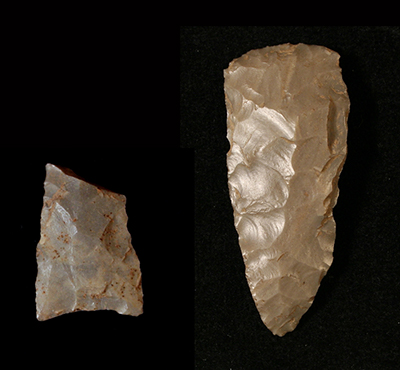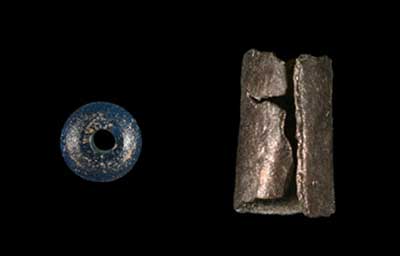Pottery from the Howard site included a variety of jars. Most had plain and smoothed exteriors. On some, though, potters had left the impressions of the cords made by the cordwrapped paddles they had used to form the vessels. Potters also had lightly drawn rectangular designs on some jars with wide sticks, leaving shallow lines. They often filled-in the areas between the lines with shallow punctuations (dots). Unusual pottery items from the Howard site included ceramic effigies of a dog and a human head.
Chipped stone tools recovered from the site included small triangular arrowheads and endscrapers. The latter were primarily used for scraping animal hides. At the Howard site, scrapers outnumbered arrowheads. This suggested that animal hide processing may have been an important site activity. Residents would have used animal furs for clothing and bedding, and may have them used as trade items, too.

A blue glass bead and a copper bead recovered from the Howard site both represent evidence of trade between Europeans and Native Americans. The glass bead is wire wound, which means the European bead-smith formed it separately by winding hot strands of molten glass around a metal rod. The blue color was achieved by adding cobalt to the glass. The copper bead was tubular and had been made from a small rectangular sheet of copper.
